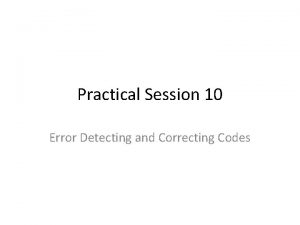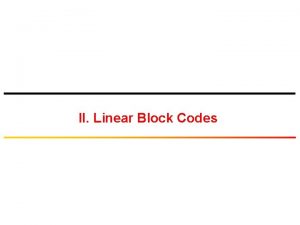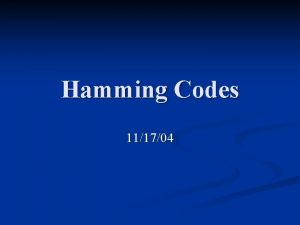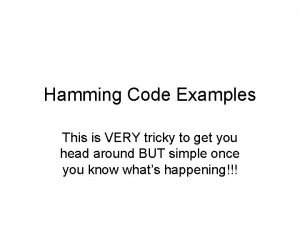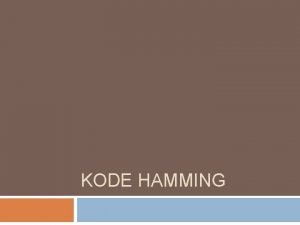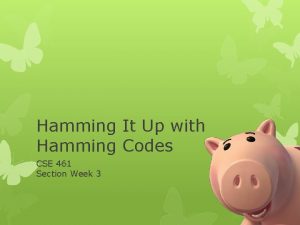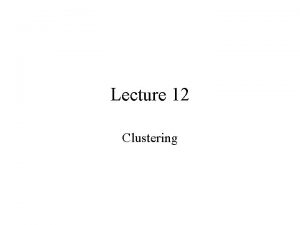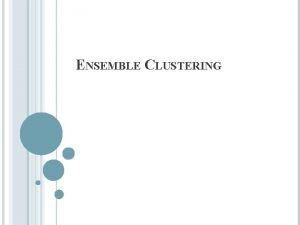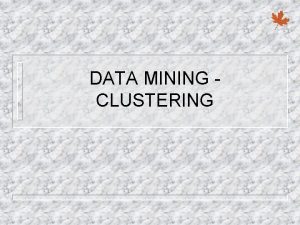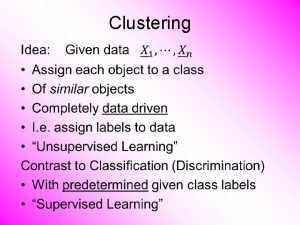Hamming Clustering A New Approach to Rule Extraction









- Slides: 9

Hamming Clustering: A New Approach to Rule Extraction Marco Muselli and Diego Liberati In Proceedings of the Third International ICSC Symposia on Soft Computing-SOCO '99, ICSC Academic Press, 499 -504. Summarized by Ha. Young Jang

Introduction Infer the rules underlying a classification problem starting from a given set of examples. e. g. character recognition, speech understanding, etc. Neural networks Know how to do, but not how to explain.

Introduction Hamming Clustering For the solution of classification problems with binary inputs. Directly infer the explicit rules in if-then form. Achieve performances comparable to those of artificial neural networks, in terms of both efficiency and efficacy. Allow a direct implementation on a physical support, since it does not require variable weights with floating point precision.

The procedure of Hamming Clustering S: a training set containing s samples (xj, yi), j = 1, …, s. xj : input patterns which have n Boolean components. xji, i = 1, …, n. x ∈ {-1, +1}n

The procedure of Hamming Clustering Hypercube {-1, +1} Training set S

The procedure of Hamming Clustering Minimal Pruning find a minimum subset of cubes that correctly classify all the input patterns in S. extracts the clusters with maximum covering one at a time. Threshold pruning maintain in C+ and C¡ only the cubes whose covering exceeds a fixed threshold τ. the value of τ is proportional to the maximum covering qmax found in the set of clusters to be pruned.

The procedure of Hamming Clustering

Tests and Results Monk’s Problem Winsconsin Breast Cancer Database

Conclusions In the reconstruction of Boolean functions HC has been able to achieve a simplified and-or expression, partially recovering the action of noise possibly affecting the aquisition of the input -output pairs. the capability of HC to build the and-or expression of any Boolean function. As an important byproduct, HC is able to identify inputs which do not influence the final output, thus automatically reducing the complexity of the given classification problem.






